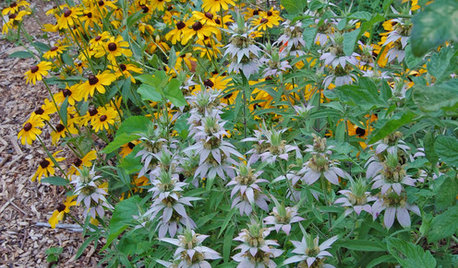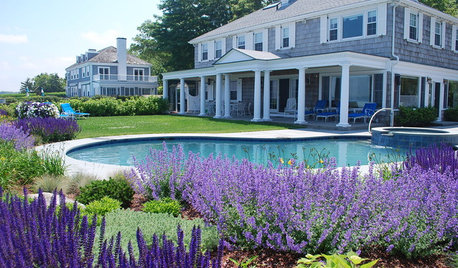Red-Spotted Purple vs. Viceroy
MissSherry
10 years ago
Related Stories

GARDENING GUIDESGreat Design Plant: Spotted Beebalm (Monarda punctata)
Looking for unusual, long-lasting blooms, low maintenance and deer resistance? Try this self-sowing perennial
Full Story
GARDENING GUIDES6 Native Ground Covers for Tough, Dry Spots
Sun beating down on your sandy gravel? Thick shade darkening your clay soil? There’s a ground cover here for you
Full Story
COLORLet Purple Passion Infuse Your Home
We take the mystery out of using this most spiritual of colors to create a deeply beautiful interior design
Full Story
PURPLEEggplant Purple Makes Rooms Rich
Eggplant purple on walls or furniture offers a rewarding payoff: confident, luxurious rooms in homes from traditional to modern
Full Story
PURPLE FOLIAGEGreat Design Plant: Purple Fountain Grass
Easy come, easy grow — give this low-maintenance grass pride of place in your garden
Full Story
COLORWhat Goes With Purple Walls?
Make a plum wall come alive with art, warm metals, ivory, chartreuse, natural wood — and at least one wild card
Full Story
PURPLEYour Colors: 3 Ways to Work With Purple
Scared of purple? Think of it as plum, amethyst or eggplant, and use with the right companion colors
Full Story
GARDENING GUIDESGarden Color: How to Landscape With Purple
Abloom with just violets and plums or with energetic contrasting accents, a garden swathed in purple is a sight to behold
Full Story
COLORPurple on the Outside
Are shades of grape, eggplant, lavender and plum the most daring colors for a home’s exterior?
Full Story
HOLIDAYS15 Spectacular Christmas Palettes Beyond Red and Green
Instead of dragging out holiday decorations in the same old expected colors this year, dare to consider these gorgeous alternatives
Full StoryMore Discussions







KC Clark - Zone 2012-6a OH
KC Clark - Zone 2012-6a OH
Related Professionals
Willowick Landscape Architects & Landscape Designers · Beverly Hills Landscape Contractors · Brookline Landscape Contractors · Metairie Landscape Contractors · Pleasant Grove Landscape Contractors · Pleasant Hill Landscape Contractors · Saint George Landscape Contractors · Framingham Fence Contractors · Newington Fence Contractors · Palm Harbor Fence Contractors · Woodland Fence Contractors · San Lorenzo Fence Contractors · Bluffton Window Contractors · Farragut Window Contractors · Hudson Window ContractorsKC Clark - Zone 2012-6a OH
bananasinohio
MissSherryOriginal Author
bananasinohio
butterflymomok
bananasinohio